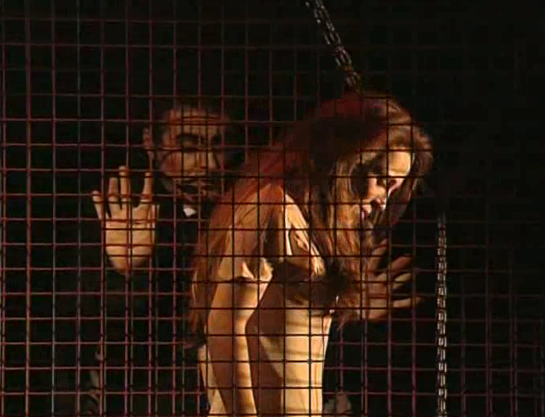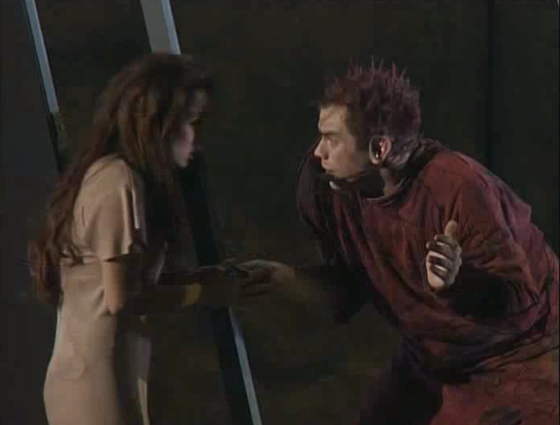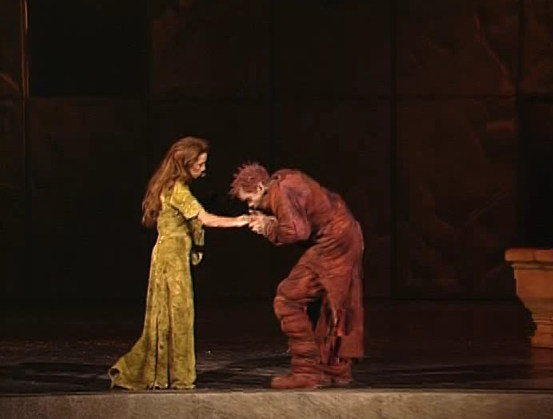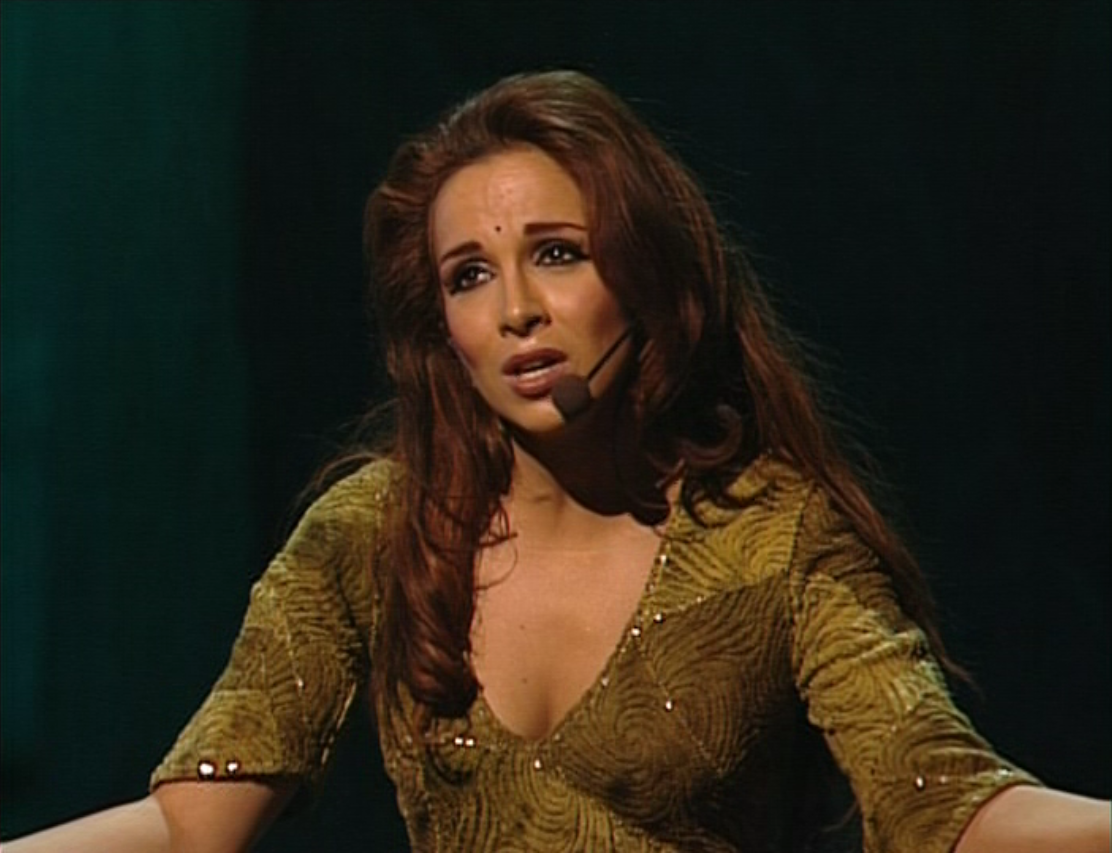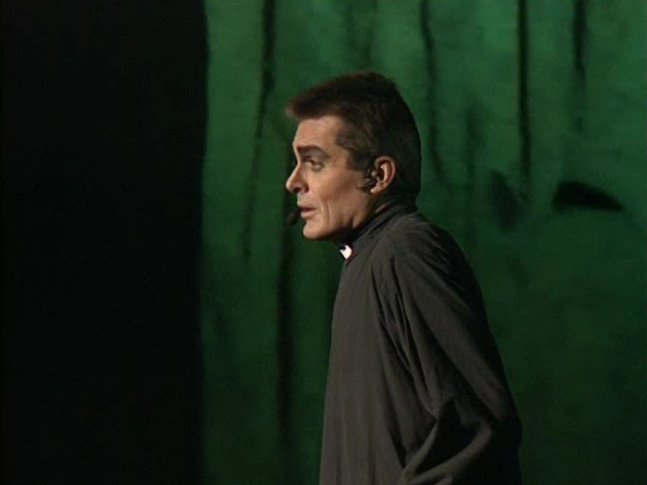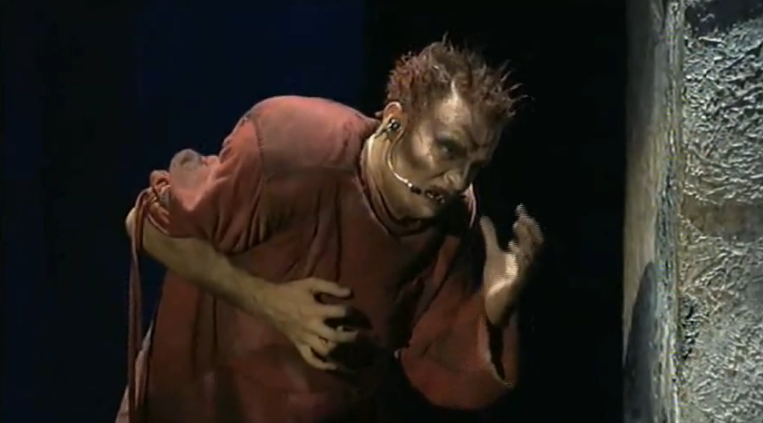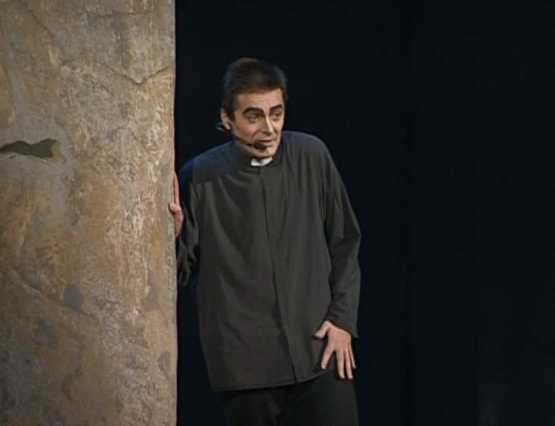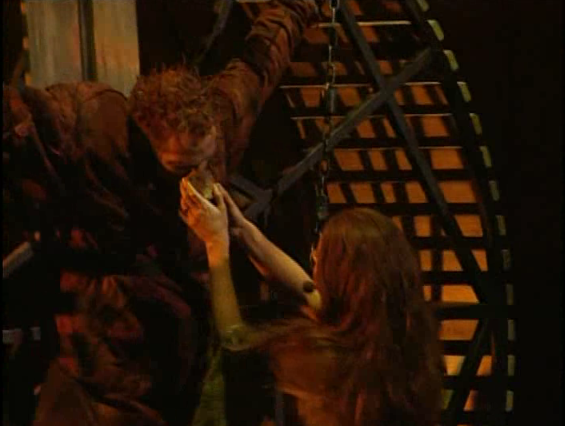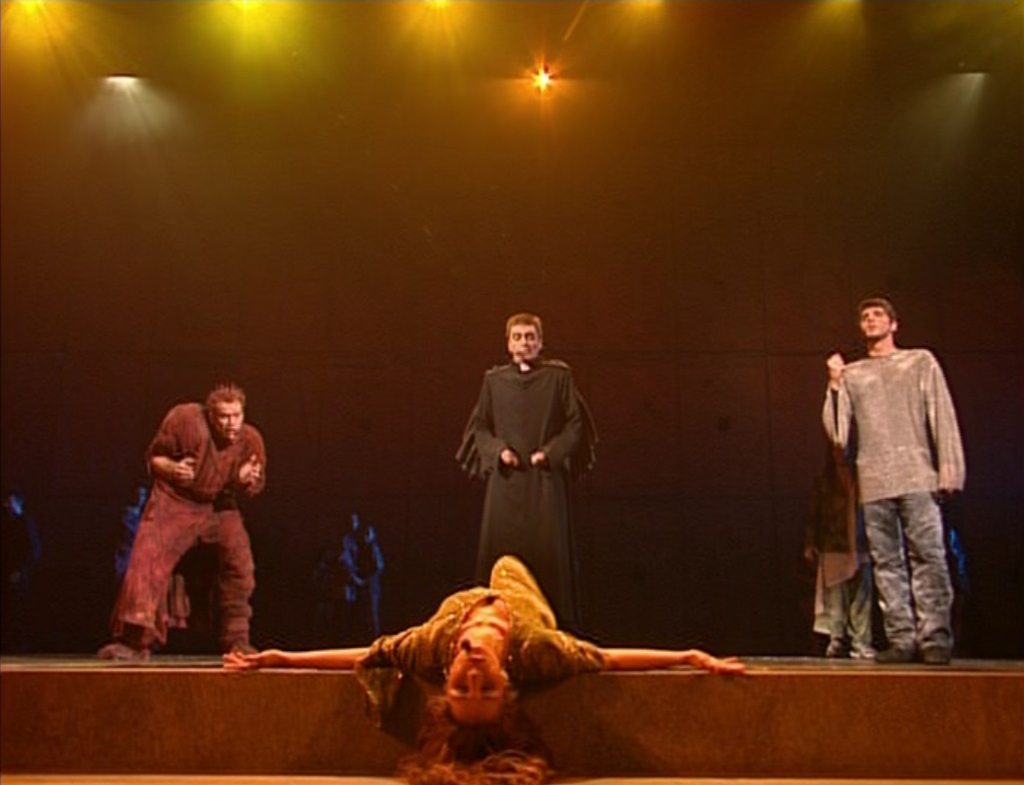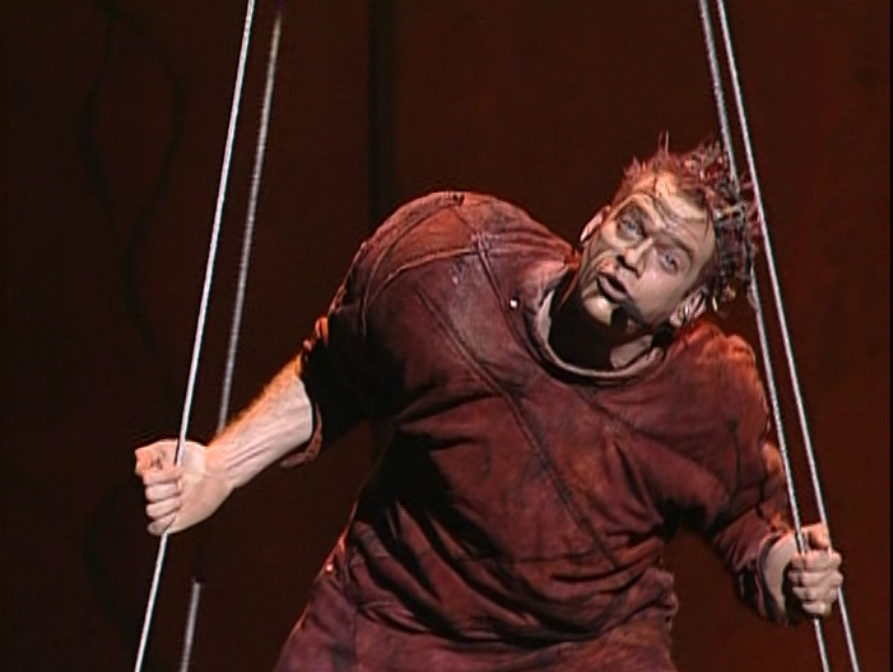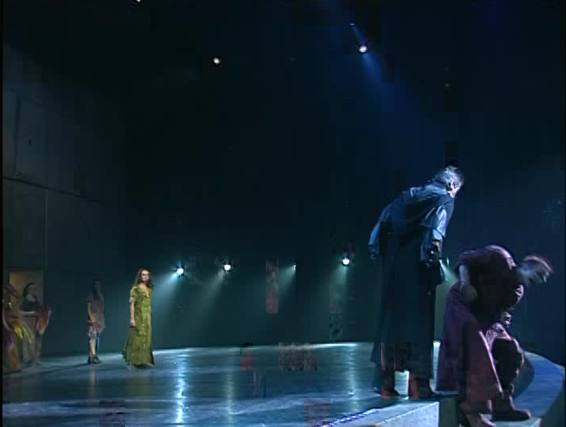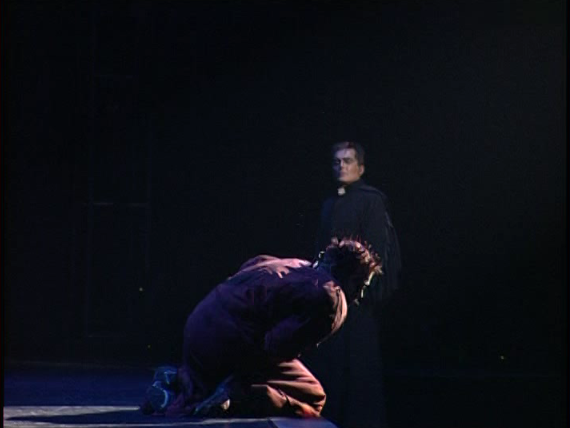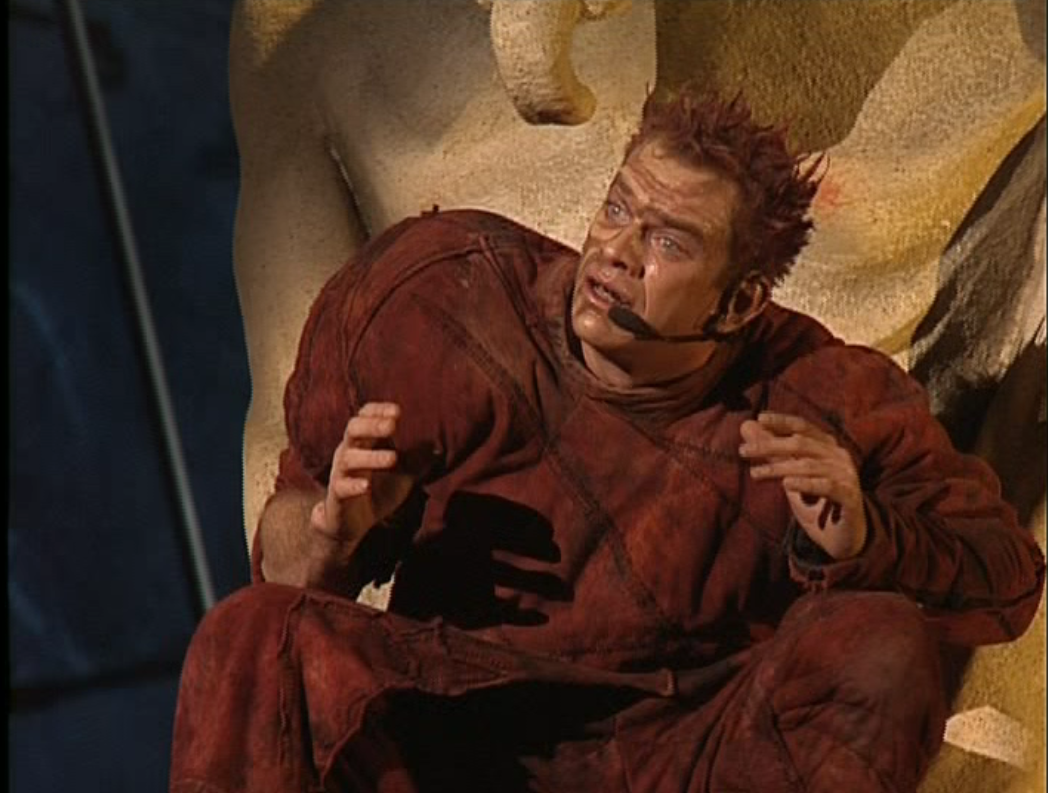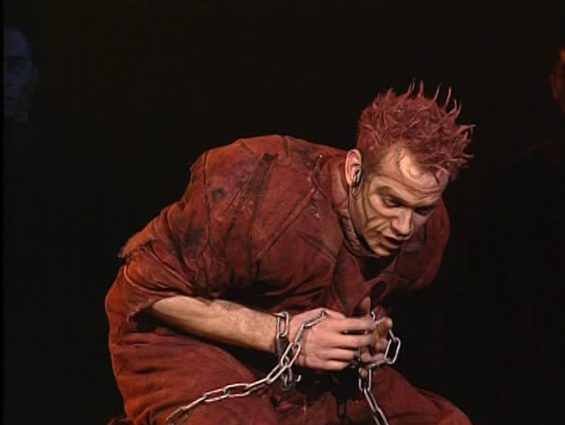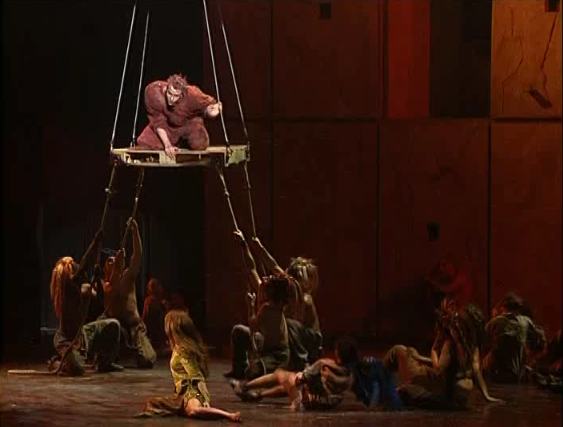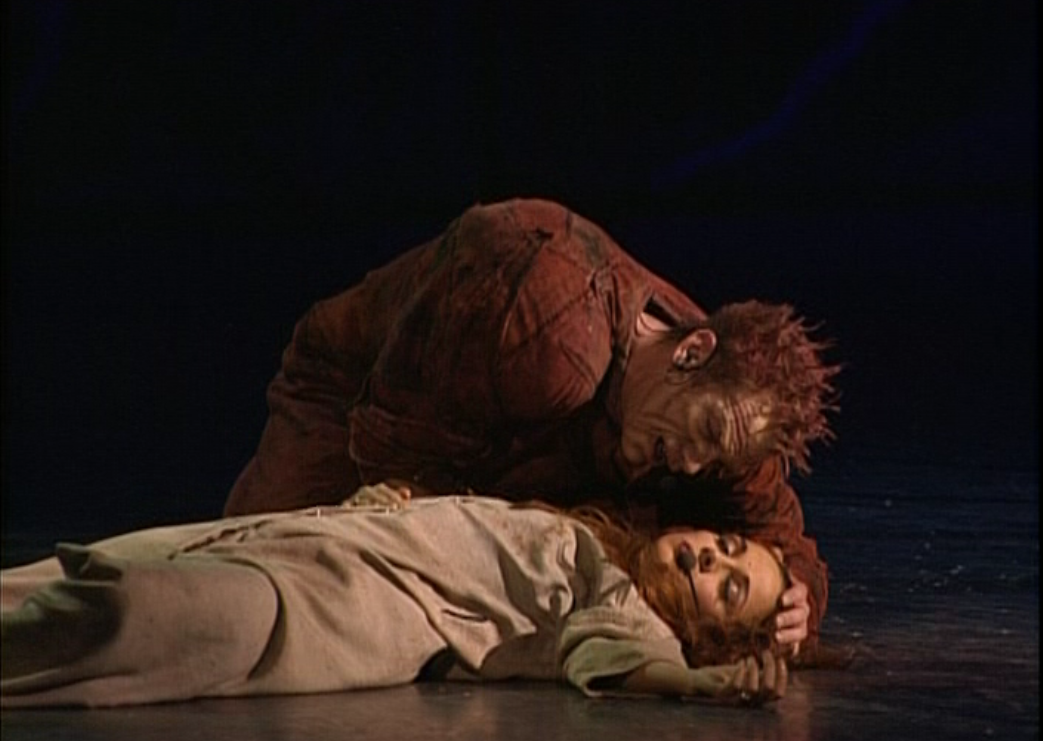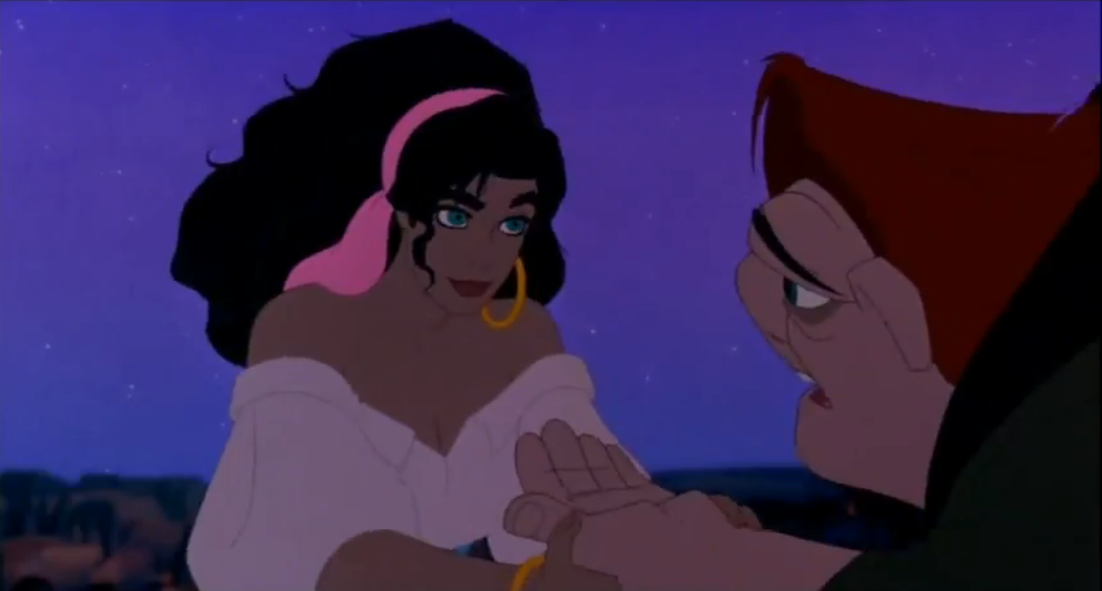Visite de Frollo à Esmeralda (Visit of Frollo to Esmeralda)
I once had the je t’aime as a ringtone, it was awesome. I want to say that any good version of Hunchback should have a jail scene but what I really mean is a confession scene. In that scene the lines do not have to be line for line of the book but lines that capture the mood energy of the scene. That’s what separates a good confession scene like the 1939 version from a meh one like the 1977 version.
However Visite de Frollo à Esmeralda is the perfect version, it gets the scene down perfectly. They only thing that is different is that Frollo isn’t as threatening or a scary as he is in the book, he is done right crazy. Here is just more sexually-repressed which gives was to crazy laster one but he doesn’t have the ice gaze with fiery eyes, however that more on a perform level than the intention of the show, but I don’t mind it, Lavoie’s Je t’aime is powerful, it’s great.
As far as the song goes, it is a lead in to the next song. It has the same off-ness that the other songs have had, defiantly a tone of this part of the musical. But it a a really good lead in.
Un Matin tu Dansais (One morning you danced)
Un Matin tu Dansais is the really the confession scene proper. In it Frollo confesses his feeling and thoughts towards Esmeralda, she rejects him and he tries to force himself on her, so we get the port de rouge scene mixed in. You got love Lavoie acting here when she pushes him away and he touches the spot where Esmeralda pushed him.
Again. like the lead in, the tone of the song has that off-balanced vibe that we all have come to love, haven’t we?
I don’t have any complaints about this song, the tone it perfect, I really enjoy the acting and the staging. If I did have one issue it would that Esmeralda isn’t scared of Frollo, which fits her character in the musical but not the book.
Libérés (Liberty)
Libérés is a great high energy song that is the perfect contrast to the songs that have some before however I do have some issues with it.
In the song, Quasimodo sets Clopin and his people free and then they save Esmeralda. The song is about revolution and their rights to asylum. The singer just sings this some with such power and conviction that it’s great. Also the staging and use of the space is awesome. They remove the iron bars and people suspend down the climbing wall which is cool.
Now it may seems like have a lot of issue with this song but I nitpick and just watching the musical you would more than likely not even think about these things.
1, As powerful as this song is, it is weak if you compare its counterpoint in the book where Quasimodo descends from Notre Dame and save Esmeralda right before she about to be hanged and proclaims Sanctuary. Here he just opens a cage door and the Clopin is the one to actually save Esmeralda.
I get why they did it this way, practicality and budget.
2, On contextual level, how did Quasimodo know where to go and when to show up?
Last time he was on stage he was in Notre Dame asking where Esmeralda went off to.
One could speculate that Gringoire told him as Clopin failed to save Esmeralda with his complaining song but how would Gringoire know that Quasimodo had interest in Esmeralda? Gringoire and Quasimodo have zero interaction with each other except for the Feast of Fools. Gringoire’s part in Libérés seems to indicate that he told Quasimodo BUT Gringoire has a storyteller role in Notre Dame de Paris so is he in this song as Gringoire the character or as Gringoire the storyteller?
Consider this? Gringoire’s part in Libérés is independent of the other singers, he is singing on his own and he off to the the side for most of the song and comes in separately from Quasimodo toward the middle on the song. It seems like he more of a storyteller than a player in the plan.
However the simpler method is typically the more likely so we”l just go with Gringoire told Quasimodo even though it makes no sense, since the play made it a point that Gringoire told Clopin but not Quasimodo, better drama I guess.
Side Note- The English version of this song is really awkward. it sounds like an ad for a Mattress Store One Day sale.
Get the whole GLORIOUS ALBUM HERE


